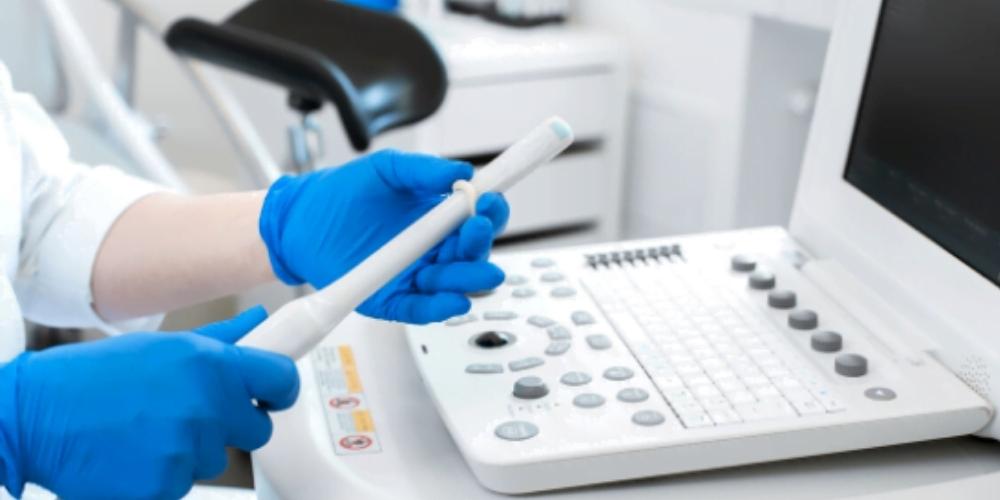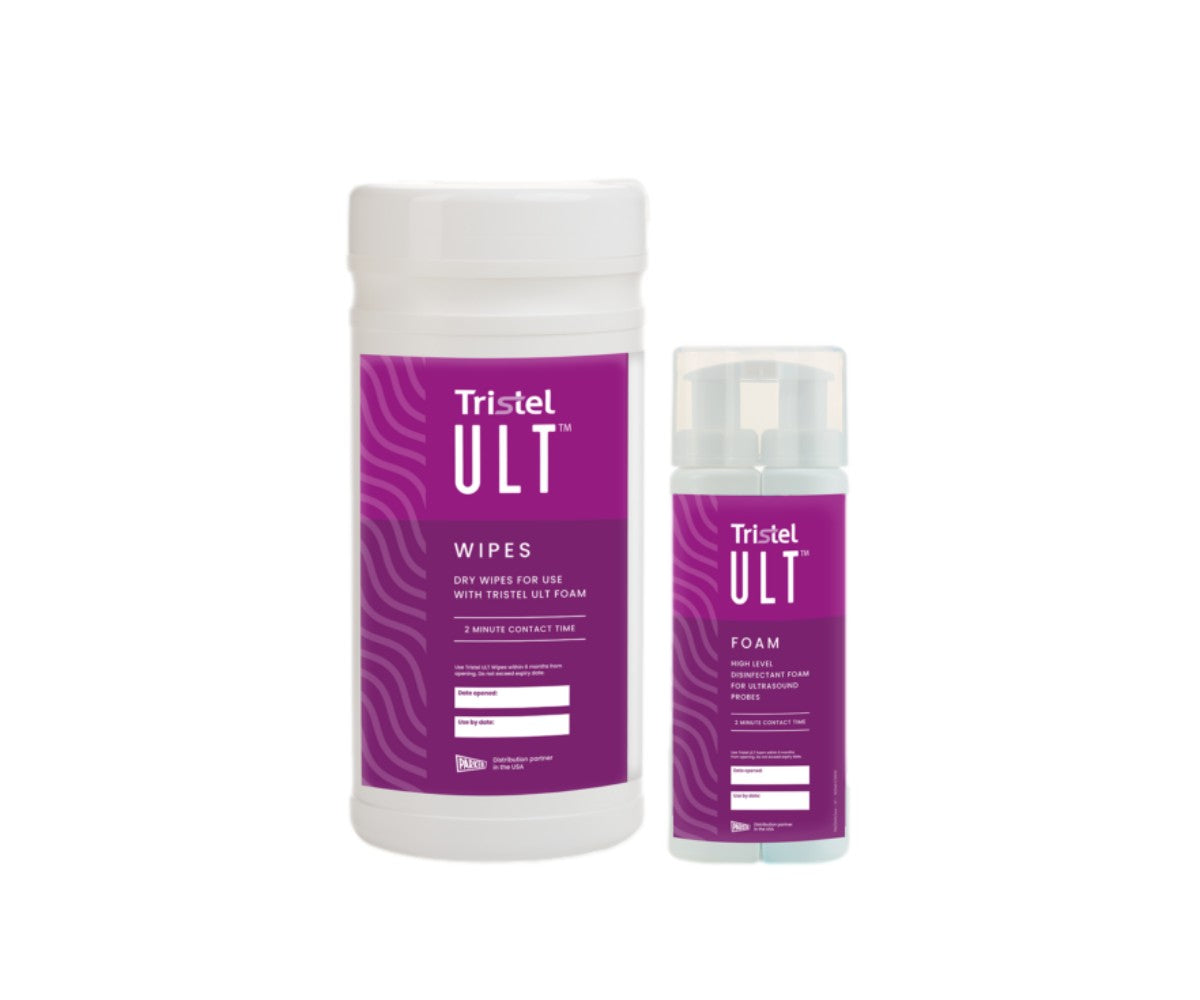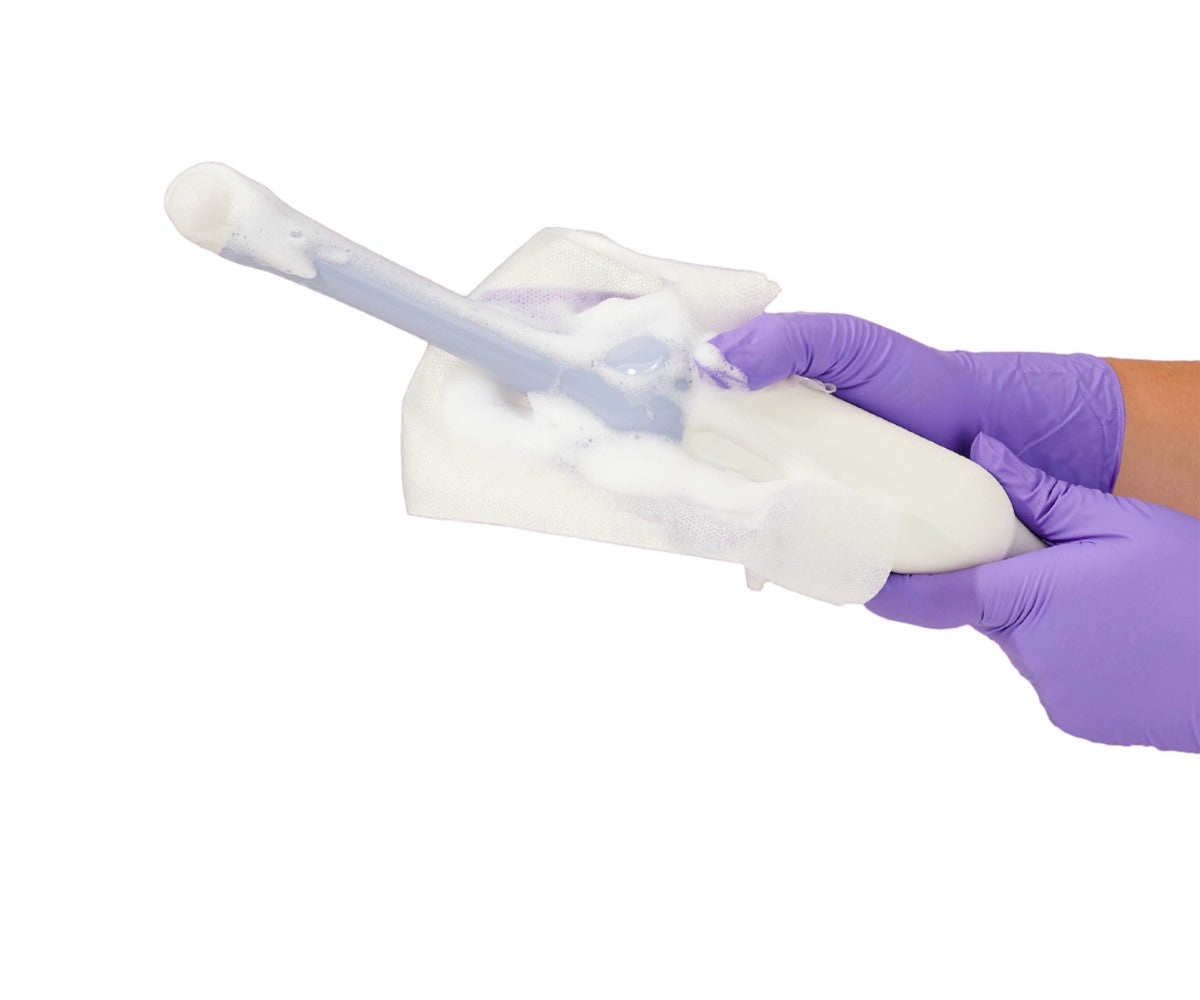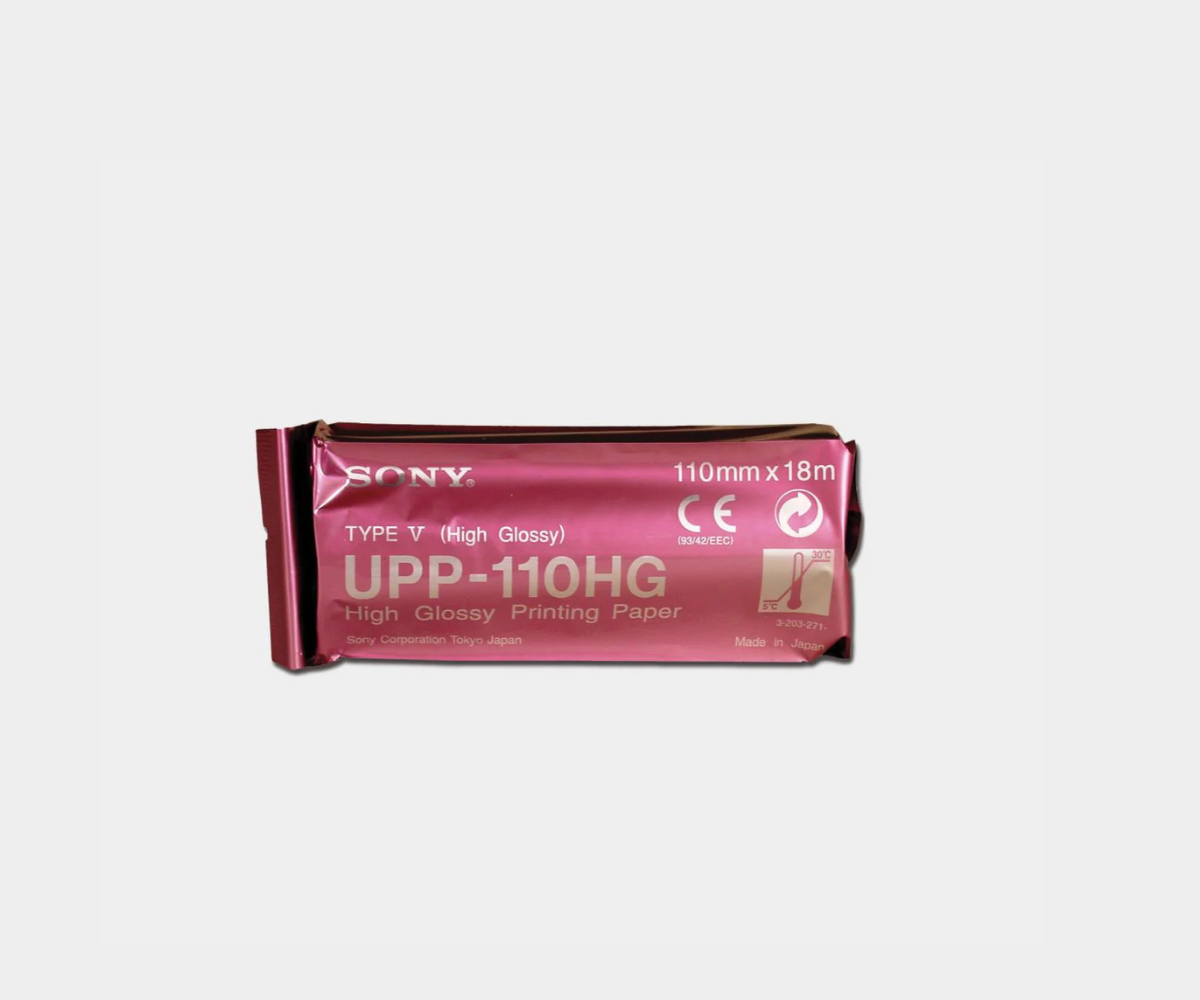Infection prevention remains a top-of-mind concern for healthcare practices across the country. The CDC classifies the fight against healthcare-acquired infections as a winnable battle and stresses the importance of proper disinfection practices and infection control measures in the effort to lower the risk of transmission. A survey from the European Society of Radiology (ESR), however, gave alarming insights into how some practitioners fail to follow proper disinfection practices for their ultrasound probes.
To reduce the risk of infection, ultrasound probes should be disinfected with medical-grade solutions after each use. Nonetheless, the ESR survey revealed that about 29% of practitioners did not disinfect the ultrasound probe after each patient. Furthermore, it is mandatory that probe covers be used for procedures where the risk of infection is high, such as transvaginal or transrectal procedures. 11% of the surveyed practitioners failed to use a probe cover during either of these. Sterile ultrasound gel is also the preferred choice for procedures that take place in high-risk areas; however, 30% of those surveyed did not use a sterile gel for their endocavity scans.
The survey was conducted online and sent to 22,000 full ESR members. The response rate of completed surveys stood at 4.3% (97% of whom were radiologists working in large hospitals). The results showed a wide array of ultrasound probe disinfection practices in Europe and authors of the survey noted how it revealed that education is an urgent priority.
"These survey results underscore the importance of raising awareness amongst clinicians of the risks of infection associated with ultrasound, in particular when transducers are in contact with mucous membranes and potentially infected bodily fluids," wrote lead author Dr. Christiane Nyhsen, consultant radiologist at City Hospitals Sunderland, U.K., and fellow members of the ESR Working Group on Ultrasound. "Expert European recommendations are needed to educate clinicians, guide best practices, and ensure that safe patient care is provided."
Ultrasound is considered one of the safest imaging modalities. However, in an article published in Insights into Imaging, Dr. Nyhsen and colleagues wrote that concerns have been raised about the risks of healthcare-acquired infection transmission on ultrasound probes. The team created a survey to establish infection prevention and control measures in ultrasound and give prominence to the importance of good medical practice.
Using an online survey software, the researchers posed 22 questions about location, nature of the practice (private center versus hospital), size of the facility, and number of yearly ultrasound procedures. The survey also recorded known incidents involving the transmission of a healthcare-acquired infection. The final part of the survey gathered data on the ultrasound gel used both in direct contact with the patient and inside probe covers.
Key Findings
Here is a summary of the key findings from the survey:
- Almost two-thirds of respondents decontaminated the probe by first wiping off the ultrasound gel, with subsequent disinfection of probes with foam or wipe after each patient (65%). Meanwhile, 29% disinfected the ultrasound probe only at the end of the workday. Only 4% used a dedicated washer to thoroughly decontaminate the ultrasound probes. There were some practitioners who wiped down the probe with a dry towel but took took no further measures to disinfect it.
- In cases where the patient was known to have a transmissible infection, 77% of practitioners wiped off the gel and then used disinfectant wipes or foam after the procedure, and 18% disinfected the probe in an ultrasound probe washer. Another 5% of respondents performed other disinfection procedures or gave insufficient information.
- About 70% of those surveyed performed interventional procedures. The majority of these interventional practitioners used probe covers at all times. Even so, almost one-quarter of them (23%) did not use an ultrasound probe cover during their interventional procedure. Generally, practitioners used ultrasound gel from either a refill bottle (40.4%) or a single-use bottle (24.4%). The remaining quarter of those surveyed used sterile ultrasound gel packets. Ultrasound gel used in direct contact during interventional procedures was mostly from sterile gel packets. The remainder stated they used gel from refillable bottles (10.5%) or single-use bottles (12%).
- Probe decontamination procedures were similar to endocavity probe disinfection. Most practitioners wiped off the gel and disinfected the probe after each patient (76%). Only 7% used a three-step high-level disinfectant wipe cleaning process. The remaining 10% used a dedicated ultrasound probe washer.
- Twenty-six practitioners responded that they knew of cases of healthcare-acquired infections which had been transmitted through ultrasound procedures. The actual figure of ultrasound probe contamination and the transmission of healthcare-acquired infections via ultrasound procedures is unknown and potentially higher.
- The survey revealed another factor was the choice of ultrasound gel. Many ultrasound gels used for medical purposes do not have bacteriostatic properties and cannot be viewed as sterile unless stated by the manufacturer. Only 30% of respondents used sterile gel packets in direct patient contact for endocavity scans. Meanwhile, the majority of practitioners performing interventional procedures chose a sterile ultrasound gel (77.5%).
Dr. Nyhsen and her colleagues noted that the complete decontamination of ultrasound transducers is a challenge for medical practitioners. Wiping ultrasound probes with a dry towel can result in persistent contamination. In addition, a variety of in vitro effective chemical disinfectants, such as glutaraldehyde, pose health hazards to medical staff in direct skin contact or through inhalation.
Furthermore, the design of the ultrasound probe and its suspectibility to damage by chemicals – for example, alcohol – must be taken into account by practitioners and infection preventionists. Medical practices should use ultrasound disinfectant sprays and wipes that are specifically designed for ultrasound probes as these lessen the risk of damaging the probe and extend its lifetime.







